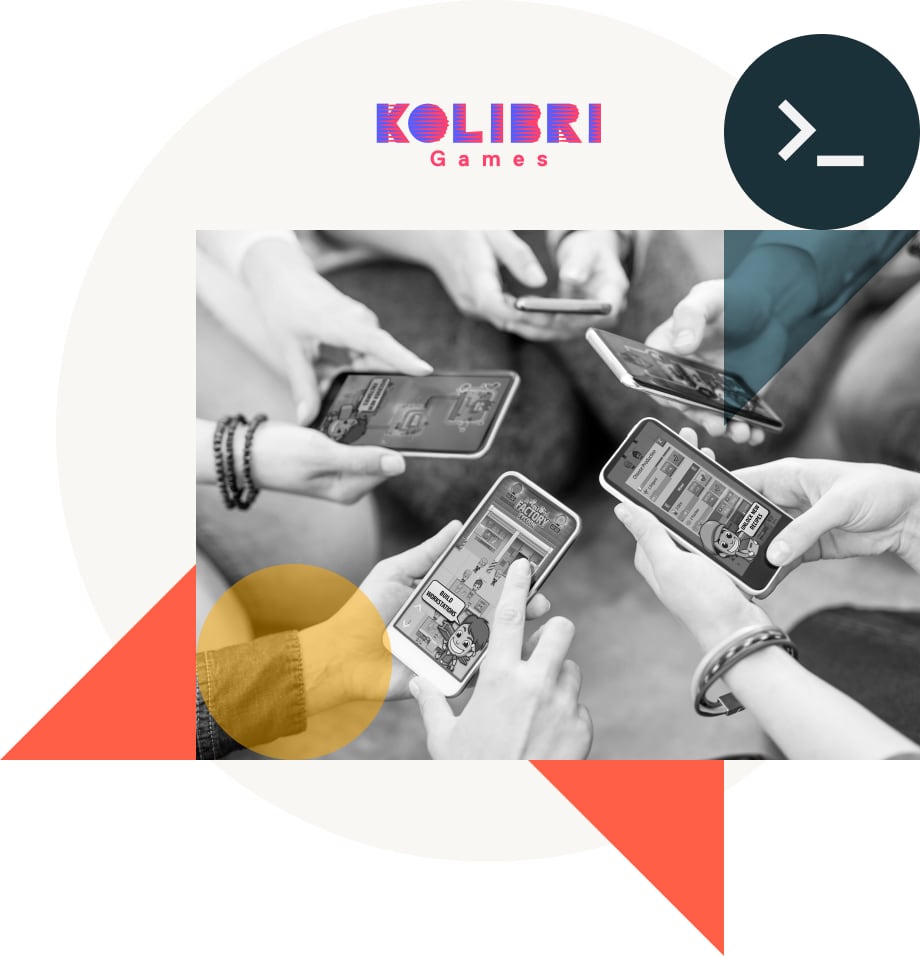Predicting and increasing customer lifetime value with ML
Increase in player lifetime value
Data team productivity
Reduction in ML model to production time

Located in the heart of Berlin and known for its refreshing player-led approach, Kolibri Games is a rising star on the mobile games scene, with hit titles Idle Miner Tycoon and Idle Factory Tycoon attracting over 10 million monthly active users. Player behavior, likes and dislikes are used to make decisions about game features and campaigns, keeping Kolibri Games both player and revenue focused. Databricks helps Kolibri Games marry player satisfaction with business value creation by maximizing the value of ever-growing volumes of data, accelerating ML production, scaling quickly and improving data team collaboration.
Harnessing data to drive better customer experiences
Kolibri Games worked with Databricks to solve a number of business challenges. First up was rationalizing working practice across the data disciplines and adding automation to expedite development. “The development release cycle for the data team was two weeks. This was too slow and needed automating to ensure the right in-game changes made it into the game while still relevant to the players,” explained CTO and co-founder Oliver Löffler. The team also wanted to create a calculation of player lifetime value so they could improve it while staying player led. “Having an open ear for our players is the best way to constantly improve our games and keep gamers interested. We wanted to use data science to understand player behavior and achieve predictions on how much value they will generate,” said Löffler. Significant company growth included a new and growing data team but poor collaboration. “Data engineers and analysts didn’t work closely, they were not speaking the same language and could only share data locally over Slack,” Löffler explained.
Creating a data-driven landscape
Kolibri had already built a platform in Microsoft Azure and tentative, first steps experimenting with acquisition marketing successfully made an impact on revenue. However, the team also started to see some problems in scalability and operations, “With over 10 million monthly active players, huge data volumes from multiple sources were proving a challenge. We wanted to increase and improve user acquisition activity, understand ROI and that needs to be data driven,” said Löffler. It became crucial to use data better. “We saw Databricks as a first-party service, integrating easily with Microsoft applications,” said Löffler.
First, they moved game play data ETL and streaming to improve reliability and enable near-time processing. Data is stored in Azure Data Lake with Delta Lake providing easy fast data access and storage. “Databricks now ensures we can process data and then store data in Delta Lake. We can scale easily, distributing work on different machines, adding clusters when necessary. It’s very easy, a couple of clicks.”
Increased player LTV and faster personalization time-to-market
The Kolibri Games team have achieved their ambition and created a successful ML use case concerned with prediction and maximizing LTV. Kolibri Games can now predict their spending and value against certain customer attributes and make more effective marketing and game-play decisions based on the predictions. This approach has increased LTV by 30% per player and has also enabled Kolibri Games to stabilize and grow active user numbers. The cost per acquisition and cost per install values are kept efficient through effective targeting based on data analysis. “Our data helps us find specific customers and respond with acquisition channels and campaigns that they value. This also increases revenue,” said Löffler. Next, Kolibri Games plans to use recommendation engines more and predict player termination. “We want to understand patterns that predict when a player will leave the game and stop playing, test pricing for customer segments etc,” Löffler said.
Using MLflow means production time for machine learning has reduced. “We can achieve ML production much faster — from two weeks to two hours. There are fewer manual processes and less error fixing. We can focus on continuous innovation,” said Löffler. An idea or feature change can be validated very quickly and easily using scripts within Databricks. “A/B testing is more sophisticated and faster. Data scientists explore the data and use notebooks to quickly understand whether or not changes have a positive impact and so deploy the right new features earlier,” said Löffler. The team is also using data to create algorithms that automate showing specific advertising to certain users. “For example, players that do or don’t use ads or in-app purchases will value different marketing offers,” Löffler explained.
“We now have an intuitive platform, it’s easy to work on cross-disciplinary data challenges within the same infrastructure using the same tools in a central place,” Löffler explained. Programming language has also been consolidated, the team used Databricks to assess the best languages and then switched to Python. “We use notebooks for collaboration, solving problems together and easy data analysis,” said Löffler who estimates that working productivity across the data disciplines has increased threefold. Data teams now work effectively and easily across their data, which is fundamental to making new ideas and innovations a reality more successfully and profitably.
“We have combined our knowledge with Databricks to become data-driven. Understanding and predicting player behavior using data and ML is important for us in achieving our mission to become the most player-oriented games company in the world. We couldn’t have done it alone,” Löffler concluded

